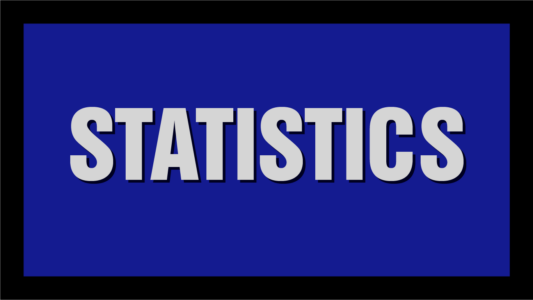It’s time for a change.
However, the play styles of Austin Rogers and James Holzhauer have caused me to update and revisit the model. For one, Austin had a slightly-above-average Coryat, but he was able to harness Daily Doubles to larger scores going into Final Jeopardy! than would otherwise be predicted by the model. Thus, I have created Version 2, which takes into account score going into Final Jeopardy as opposed to Coryat score:

Figure 1: The correlation between pre-Final Jeopardy! score and win percentage (October 4, 2004 – April 19, 2019.)
As with Version 1, the trend line (now a logistic sigmoid curve) corresponds to a percentage chance of winning the game.
As with Version 1, to run my simulations, I will still use a Python script to generate 1,000,000 normally distributed scores (given the mean and standard deviation of the player’s scores going into Final Jeopardy thus far) and from there, generate the mean winning percentage to determine both the player’s chances of winning their next game as well as a predicted length of their streak (in this case, r / (1 – r), where r is a player’s chances of winning one game).
For runs that have yet to reach 11 games, the model will adjust the standard deviation when generating scores. A 1-game champion will use the standard deviation of a player score ($6,509); A 2-game champion will use a weighted average of 10% their standard deviation and 90% the population standard deviation (the $6,509), and so on through to the 11th game.
Hopefully this update to the model will allow for even better accuracy going forward, especially when it comes to outlying data. The new model will be used starting with the April 22, 2019 game.
Become a Supporter now! Make a monthly contribution to the site on Patreon!

Since Alex Trebek’s diagnosis of stage 4 pancreatic cancer, many community members have been raising money. The Jeopardy! Fan Online Store is as well! All proceeds from any “Keep The Faith And We’ll Win” shirt sold will be donated to Alex Trebek’s preferred charity. (The de facto alumni association is currently inquiring with the show in order to determine Alex Trebek’s preferred charity; this will be updated when that has been determined. To date, over $250 has been raised.)


Andy, I was linked here by 538. Good stuff and thanks for sharing. Is there any way you could be a little more specific about your methodology after you generate the 1,000,000 sample of Coryat scores? You take that sample mean to determine winning chance based on your correlation curve? Or am I missing something?
1,000,000 normally distributed sample scores are generated based on the mean and standard deviation of James’ scores going into Final Jeopardy! to date (in the case of the April 30 model, mean = 48,375; sd = 14,610). Each of the 1,000,000 scores is then given a winning percentage based on the correlation curve, and the mean of the 1,000,000 winning percentages is then taken.
Got it and appreciate the (prompt) clarification.
I am still not sure why the mean of the 1,000,000 winning percentages is different than the winning percentage of the mean of the 1,000,000 Coryat scores. But I see that it is based on a quick simulation I did with dummy data. Guess I’ll dive deeper tonight.
Thanks again.
Will:
James’ current mean score going into Final Jeopardy is $49,001. That correlates to a 99.971% chance of winning (and a streak of nearly 3,500 wins).
However, James’ performance from game-to-game varies. He’s going to have games where he’s going to be at $70,000, and he’s going to have games where he’s at $30,000. The model even throws in a few $20,000s, or worse, for good measure (as, for James, $20,000 going into Final Jeopardy is only two standard deviations below his mean). When he scores well higher than his average it’s obviously not going to move his average much higher, as it would be impossible to go higher than 100% However, for the well-lower-than-average scores, James is only going to have a 75%, 80%, 85% chance of winning the game. Thus, the weighting of the potential below-average performances brings the average down, and is why the model takes the mean of the winning percentages, as opposed to the winning percentage of the mean.
Hi Andy, Killer site.
So, obviously buzzer efficacy (dominance) is built into the score. He seems to be getting better and better. The difference in say 55% and 65% buzzer average is a huge difference in loss rate I would think. Mostly because there’s a tipping point where there isn’t enough money left on the board. Ok, I don’t really know where I’m going with this, lol.
But what I really wanted to ask for (or suggest) was maybe a graph of his daily buzzer average over time. (And maybe a sweet article about it.) And then ask if your model figures “where is now” vs “his average”? I am pretty sure he is better now than his 59% average(courtesy of J!fan). Imagine if he settles at 70%! That would do some damage to the outliers.